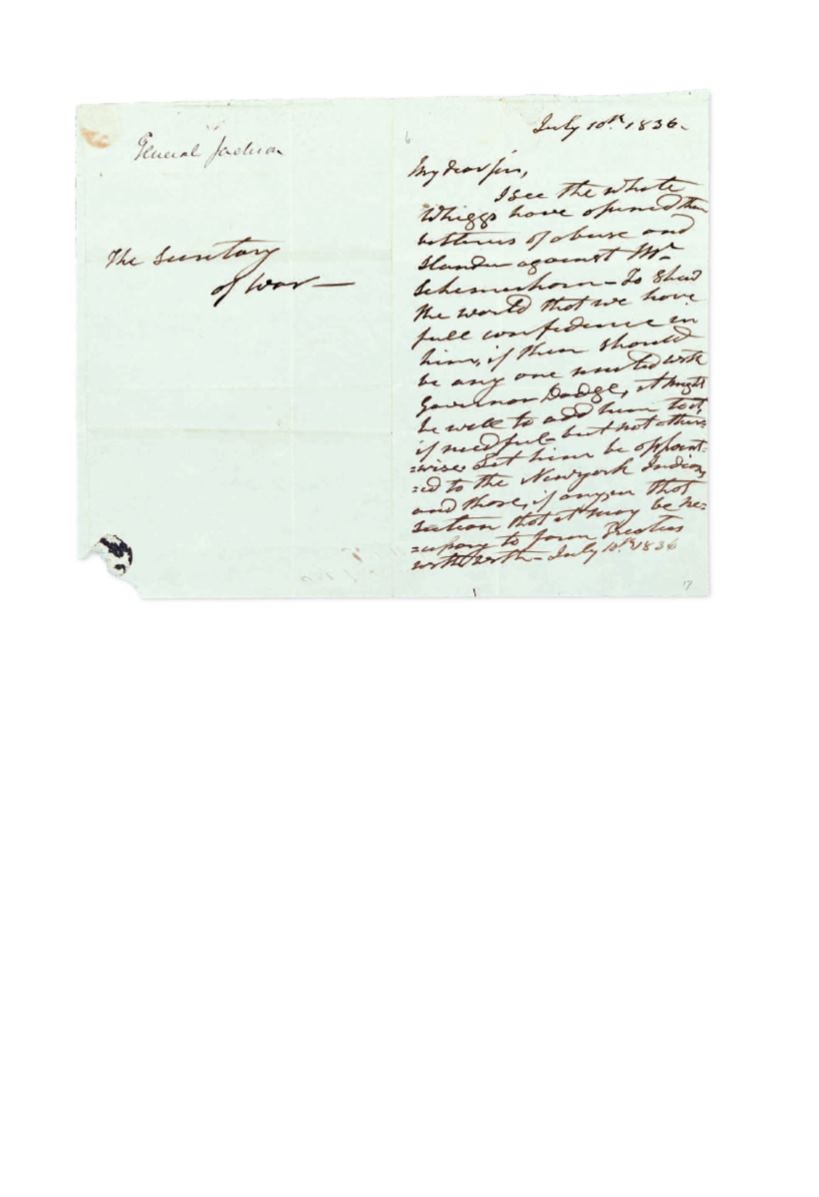

EXERCISING INDIAN REMOVAL POLICY IN NY
142
●
JACKSON, ANDREW. Autograph Letter, unsigned, as President, to Secretary of
War Lewis Cass, recommending a demonstration of confidence in Indian Commissioner
[John F.] Schermerhorn by sending him to assist Governor [Henry] Dodge and appointing
him to negotiate with the Native Americans of NY. 1 page, 8vo, with integral address leaf;
seal tear with minor loss to lower left of address leaf, folds. (TFC)
Np, 10 July 1836
[1,500/2,500]
“
I see the white Whiggs [sic] have opened their batteries of abuse and slander against Mr.
Schermerhorn. To show the world that we have full confidence in him, if there should be any one
wanted with Governor Dodge, it might be well to add him to it, if needful, but not otherwise. Let him
be appointed to the New York Indians and those, if any, in that section that it may be necessary to
form treaties with . . . .”
In December of 1835, with Andrew Jackson-appointed Indian Commissioner John F. Schermerhorn
negotiating on behalf of the U.S. government, a minority faction of Cherokees signed the Treaty of
New Echota, agreeing that the Cherokee nation would peacefully relocate to what is now Oklahoma.
This treaty was executed without the knowledge or consent of John Ross, the duly elected chief of the
Cherokees, or his thousands of followers. In accordance with the dubious treaty, the Cherokees were
forcibly removed from their land and sent to Oklahoma as the last of the five tribes to march down the
Trail of Tears. In the following year, Schermerhorn continued to carry out Jackson’s Indian removal pol-
icy and began negotiating with the Iroquois in NY, but the Senecas refused to sign any treaty he
offered them. The Buffalo Creek treaty, according to which the NY Iroquois were relocated to the
Kansas territory, was offered by another commissioner in 1838 and signed under dubious circumstances.









